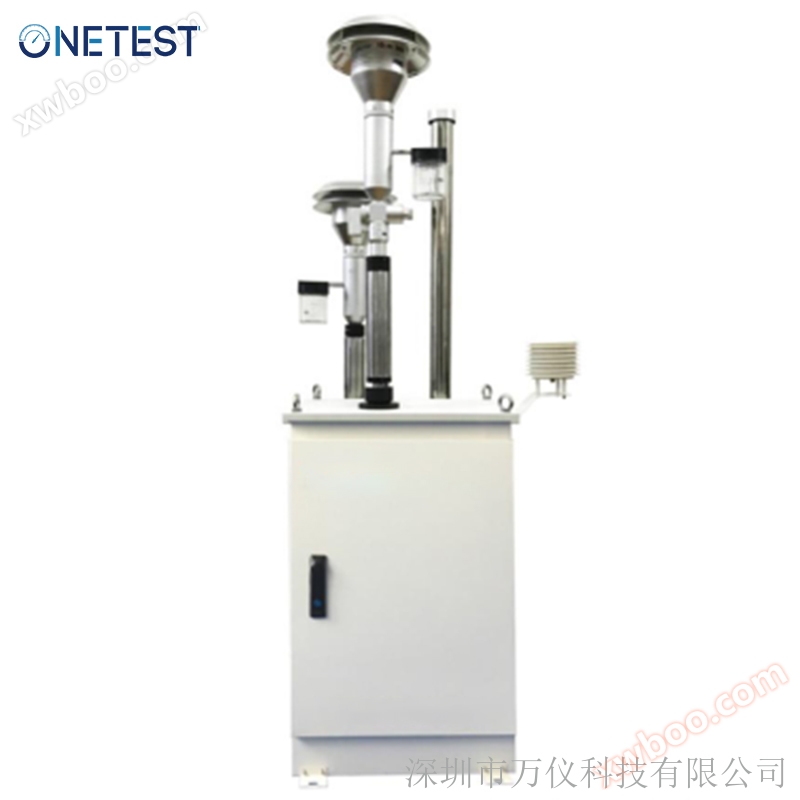•System Introduction
The PMION-1000 air quality automatic monitoring system adopts a modular structure design, integrating multiple analysis and monitoring modules such as PM10, PM2.5, SO2, NOX, O3, CO, etc. The air quality automatic monitoring system can continuously and real-time automatically monitor the concentration values of six pollutants and five meteorological parameters, and the monitoring factors can be expanded,systemusenational standardDetection method, volumeSmall size, easy to move, high-density distribution, can be used for real-time online monitoring of ambient air quality in various scenarios; The system can achieveRemote data transmission and fault diagnosisBuilt in large capacity data storage module; systemAdopting multiple intelligent transmission modes, monitoring data can be transmitted in real-time to the central control room for relevant departments to collect, use, and analyze data.
The system adopts a dynamic monitoring operation system to monitor real-time data of pollutant gases and particulate matter in the entire region, and collect, organize, and summarize various data to provide reliable data for the analysis of the system's operation and the preparation of real-time data statistical reports. This enables atmospheric monitoring to present the characteristics of rapid analysis, accurate positioning, and intelligent transmission, achieving true smart environmental protection.
• System composition
multielementmonitormoduleachievePM10、PM2.5、SO2、NOX、COandO3classMultivariate parametersAccurate perception
Multivariate gas calibrationmoduleZero gas generator, dynamic gas calibrator, standard gas
High speed transmission module useData receiving and transmission module, data storage module, data operation moduleBlockData Analysis and Management Module
Intelligent application moduleUtilizing cloud computing, visualization, and high-performance storage computing technologies to deeply exploreDigging data information

Principles of System Analysis
|
monitoring items |
Unit analysis principle |
|
PM10 |
βX-ray absorption method |
|
PM2.5 |
βX-ray absorption method |
|
SO2 |
Ultraviolet fluorescence method |
|
NO2 |
Chemiluminescence method |
|
CO |
Gas filtering related infrared absorption method |
|
O3 |
UV absorption method |
• System functional characteristics
-
The data storage capacity can reach millions, and the dataLong term storage.Support data query.
-
The monitoring device has a long working cycle, strong anti-interference ability, continuous automatic operation, simple installation, and easy maintenance.
-
The monitor adopts a touch screen display, with rich human-computer interaction and easy operation. The screen can displaypollutantConcentration and its dynamic curve graph.
-
Embedded computers and real-time operating systems with independent intellectual property rights control the operation, and the software can be upgraded online.
-
The unique structural design of the monitoring device,Each module does not interfere with each other, achieving high-precision concentration measurement simultaneously.
-
Using high-precision mass flow meters to control flow and constant flow sampling ensures measurement accuracy.
-
The key operating parameters of the instrument can be output to the upper computer or receive instructions for operation.
-
The key parameters for equipment operation should have automatic internal fault diagnosis and alarm prompts, while supporting remote diagnostic functions.
-
uniqueODHExternal dynamic dew point control system, controlling sample humidity within45%The following has improved the efficiency of aerosol transport.
-
The system can simultaneously measure environmental temperature, relative humidity, atmospheric pressure, wind speed, wind direction, and other factors.
-
The gas monitoring module has automatic compensation function for temperature and pressure changes.
-
The gas monitoring module hasThe precise function of "automatic zero point" ensures the stability of the instrument.
-
The monitor has a filter paper replacement reminder function. When turned on, the filter paper automatically moves to a blank area for testing.
-
The device hasGPSAnd the Beidou positioning function.
-
Interface output: digital output, analog output, enhances system compatibility.
-
The equipment has lightning protection function; The device has a self safety monitoring function and uses auxiliary cameras to monitor the device status in real time, preventing human intervention and damage to the device.
-
The instrument has an automatic restart function when powered off, which can restore normal operation.
-
The equipment adopts an outdoor cabinet with good sealing, durability, and constant temperature function, which can adapt to complex on-site working environments.
• System technical indicators
Technical indicators of gaseous pollutant monitoring module
|
detectionproject |
SO2analysis module |
NO2analysis module |
O3analysis module |
COanalysis module |
|
measuring range |
(0~500)ppb |
(0~500)ppb |
(0~500)ppb |
(0~50)ppm |
|
Zero point noise |
≤1 ppb |
≤1 ppb |
≤1 ppb |
≤0.1 ppm |
|
*Low detection limit |
≤2 ppb |
≤2ppb |
≤2 ppb |
≤0.2 ppm |
|
Range noise |
≤5 ppb |
≤5 ppb |
≤5 ppb |
≤1ppm |
|
Indication error |
±2% F.S. |
±2% F.S. |
±2% F.S. |
±2% F.S. |
|
20%Range precision |
≤5 ppb |
≤5 ppb |
≤5 ppb |
≤0.5 ppm |
|
80%Range precision |
≤10 ppb |
≤10 ppb |
≤10 ppb |
≤0.5 ppm |
|
24hzero drift |
±5 ppb |
±5 ppb |
±5 ppb |
±0.5 ppm |
|
24h 20%Span Drift |
±5 ppb |
±5 ppb |
±5 ppb |
±1 ppm |
|
24h 80%Span Drift |
±10 ppb |
±10 ppb |
±10 ppb |
±1 ppm |
|
response time |
≤3min |
≤2 min |
≤3 min |
≤2 min |
|
voltage stability |
±1% F.S. |
±1% F.S. |
±1% F.S. |
±1% F.S. |
|
Traffic stability |
±10% |
±10% |
±10% |
±10% |
About Wanyi Technology



